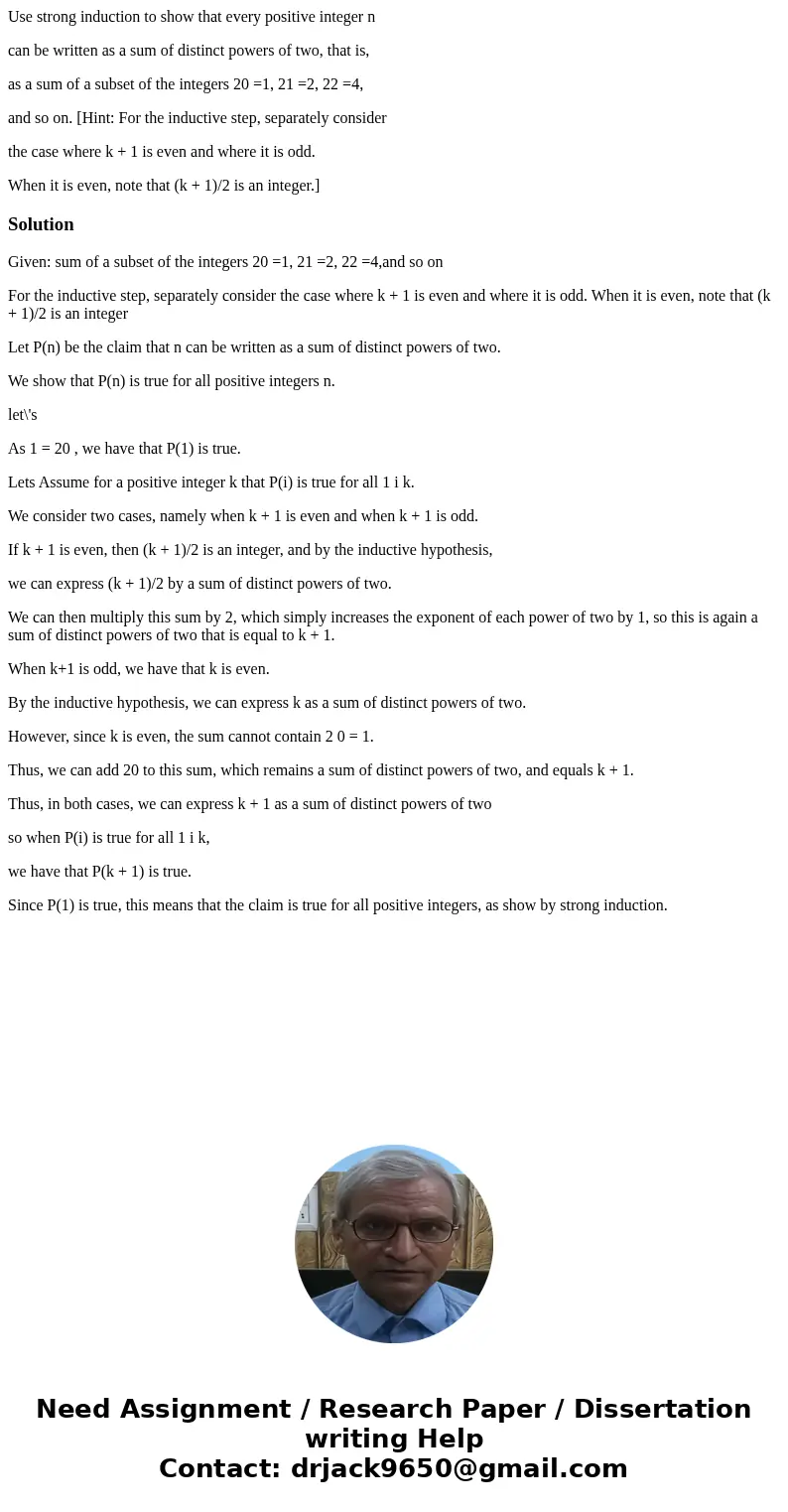Use strong induction to show that every positive integer n c
Use strong induction to show that every positive integer n
can be written as a sum of distinct powers of two, that is,
as a sum of a subset of the integers 20 =1, 21 =2, 22 =4,
and so on. [Hint: For the inductive step, separately consider
the case where k + 1 is even and where it is odd.
When it is even, note that (k + 1)/2 is an integer.]
Solution
Given: sum of a subset of the integers 20 =1, 21 =2, 22 =4,and so on
For the inductive step, separately consider the case where k + 1 is even and where it is odd. When it is even, note that (k + 1)/2 is an integer
Let P(n) be the claim that n can be written as a sum of distinct powers of two.
We show that P(n) is true for all positive integers n.
let\'s
As 1 = 20 , we have that P(1) is true.
Lets Assume for a positive integer k that P(i) is true for all 1 i k.
We consider two cases, namely when k + 1 is even and when k + 1 is odd.
If k + 1 is even, then (k + 1)/2 is an integer, and by the inductive hypothesis,
we can express (k + 1)/2 by a sum of distinct powers of two.
We can then multiply this sum by 2, which simply increases the exponent of each power of two by 1, so this is again a sum of distinct powers of two that is equal to k + 1.
When k+1 is odd, we have that k is even.
By the inductive hypothesis, we can express k as a sum of distinct powers of two.
However, since k is even, the sum cannot contain 2 0 = 1.
Thus, we can add 20 to this sum, which remains a sum of distinct powers of two, and equals k + 1.
Thus, in both cases, we can express k + 1 as a sum of distinct powers of two
so when P(i) is true for all 1 i k,
we have that P(k + 1) is true.
Since P(1) is true, this means that the claim is true for all positive integers, as show by strong induction.

 Homework Sourse
Homework Sourse